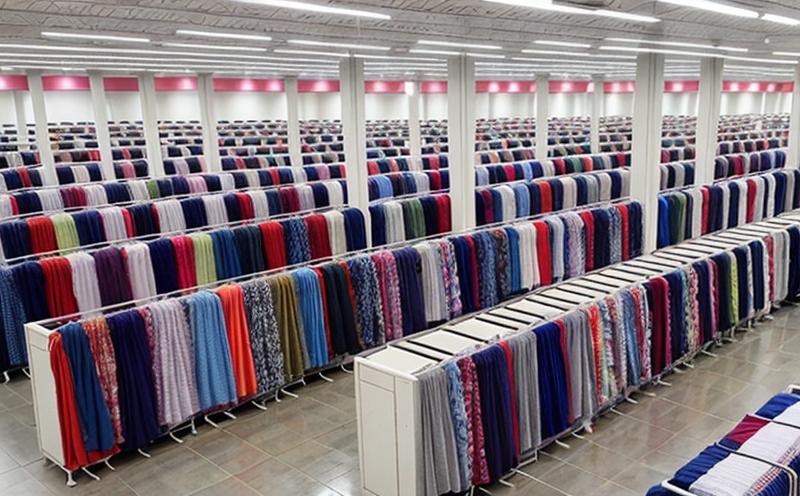ISO 11092 Thermal Resistance Testing of Apparel for Trade
The ISO 11092 standard is specifically designed to assess the thermal resistance of clothing and other protective apparel. This test ensures that garments meet safety standards necessary for trade facilitation, particularly in environments where high temperatures or intense heat can pose significant risks to workers.
Thermal resistance testing evaluates a garment's ability to prevent heat transfer from its outer surface to its inner surface. This is crucial for industries such as construction, fire services, and manufacturing, where employees are exposed to hazardous conditions. The test helps manufacturers ensure their products comply with international safety regulations, thereby enhancing worker protection.
The process involves subjecting the garment to controlled heat sources while measuring temperature differences between the outer and inner surfaces of the fabric. This ensures that the apparel maintains its protective properties under specified environmental conditions. Compliance with this standard is essential for businesses exporting their products globally as it demonstrates adherence to international safety standards.
For quality managers, compliance officers, R&D engineers, and procurement teams, understanding these tests can streamline product development processes and ensure regulatory compliance. Accurate testing results not only protect workers but also enhance the reputation of manufacturers who adhere strictly to such standards.
Scope and Methodology
| Parameter | Description |
|---|---|
| Test Specimens | The specimens used for testing must be representative of the actual products that will be exported. They should include various types of fabrics and constructions typical to those in the intended market. |
| Apparatus | The apparatus required includes a thermal resistance tester which can apply controlled heat sources, sensors for measuring temperature gradients, and data recording devices. The system must follow ISO 11092 specifications meticulously to ensure accurate results. |
| Procedure | The procedure involves placing the specimen between two chambers—one maintaining a higher temperature than the other. Temperature differences are measured continuously as heat passes through the fabric. The thermal resistance is calculated based on these measurements and compared against set acceptance criteria. |
The methodology ensures that all testing conditions are consistent with international standards, allowing for reliable comparisons between different materials and designs. This consistency is vital in maintaining trust within the global supply chain and ensuring product safety across borders.
Quality and Reliability Assurance
- Precision in Specimen Preparation: Ensuring that each sample used for testing is precisely cut to size specifications helps maintain accuracy throughout the process. Variations can lead to unreliable results.
- Data Validation: Rigorous checks on temperature readings and other parameters collected during tests help validate data reliability. This step ensures that any discrepancies are promptly identified and corrected.
Our laboratory employs advanced software solutions for data analysis, which helps in detecting anomalies early on. Regular calibration of equipment guarantees that all instruments perform optimally, contributing significantly to the overall quality assurance process.
Competitive Advantage and Market Impact
- Compliance with ISO Standards: Adherence to internationally recognized standards like ISO 11092 not only assures buyers of product safety but also enhances brand reputation. This can lead to increased market share.
- Prompt Delivery Times: Efficient testing services enable quicker turnaround times, which is crucial for meeting export deadlines and maintaining customer satisfaction.
By providing reliable thermal resistance testing, our laboratory supports businesses in staying ahead of competitors by ensuring they meet all necessary regulatory requirements. This allows companies to focus more on innovation rather than compliance issues, fostering a competitive edge in the market.





